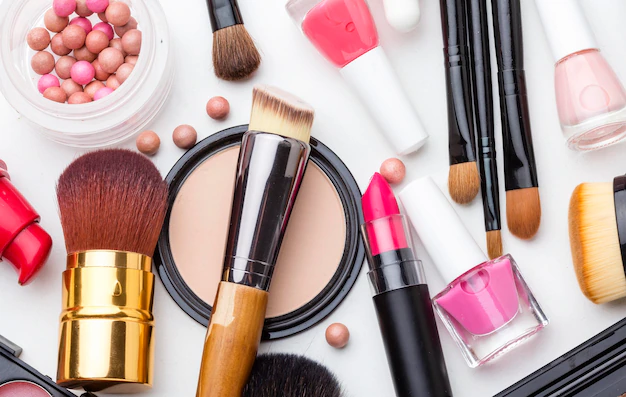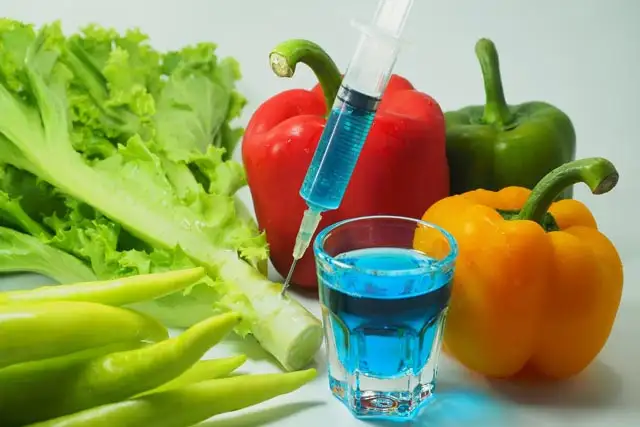Cancer Causing Elements in Beauty Products: Use of chemicals in beauty products can have negative effects on skin and health. These chemicals can lead to skin problems, allergies and other health issues. It is more advisable to choose natural and safe products. For more information watch our full video
In our pursuit of beauty, we often overlook the potential dangers lurking in our cosmetic and personal care products. From skincare creams and lotions to shampoos, conditioners, and makeup, many beauty products contain chemicals that can have harmful effects on our skin and overall health. Some of these chemicals are even linked to cancer, making it crucial for consumers to be aware of the ingredients in the products they use daily. This comprehensive exploration will shed light on the cancer-causing elements commonly found in beauty products, their effects on the skin and health, and why it is advisable to opt for natural and safe alternatives.
The Hidden Dangers in Beauty Products
1. Parabens
Parabens are a group of synthetic compounds commonly used as preservatives in cosmetics and personal care products to prevent the growth of bacteria and mold. They are often listed on ingredient labels as methylparaben, ethylparaben, propylparaben, and butylparaben. While parabens are effective preservatives, they can be absorbed through the skin and have been found in breast tissue, raising concerns about their potential link to breast cancer.
Studies suggest that parabens can mimic estrogen, a hormone that plays a role in the development of breast cancer. Although the levels of parabens in individual products are typically low, the cumulative effect of using multiple products containing parabens over time can be significant. This has led to increased scrutiny and calls for safer alternatives.
2. Formaldehyde and Formaldehyde-Releasing Agents
Formaldehyde is a known carcinogen that has been linked to nasal and nasopharyngeal cancers. It is used in a variety of beauty products, including nail polish, hair straightening treatments, and eyelash glue, as a preservative and disinfectant. In addition to formaldehyde itself, many products contain formaldehyde-releasing agents such as quaternium-15, DMDM hydantoin, imidazolidinyl urea, and diazolidinyl urea, which release formaldehyde over time to help prevent microbial growth.
Exposure to formaldehyde can cause skin irritation, allergic reactions, and respiratory issues. Long-term exposure, even at low levels, increases the risk of cancer, making it essential to avoid products containing formaldehyde and its releasing agents.
3. Phthalates
Phthalates are a group of chemicals used to increase the flexibility and durability of plastics. In beauty products, they are commonly found in nail polish, hair sprays, and fragrances. Phthalates are known endocrine disruptors, meaning they can interfere with the body’s hormone systems.
Studies have linked phthalates to a range of health issues, including developmental and reproductive toxicity, birth defects, and cancer. The most concerning phthalates are dibutyl phthalate (DBP), diethyl phthalate (DEP), and di(2-ethylhexyl) phthalate (DEHP). Consumers are advised to look for products labeled as “phthalate-free” to reduce their exposure to these harmful chemicals.
4. Triclosan
Triclosan is an antimicrobial agent found in some soaps, toothpaste, and deodorants. It was once widely used in a variety of personal care products, but concerns over its safety have led to regulatory restrictions in some regions. Triclosan has been shown to disrupt endocrine function and contribute to antibiotic resistance.
Animal studies have linked triclosan to liver and inhalation toxicity, prompting concerns about its potential to cause cancer in humans. While triclosan is being phased out in many products, it is still important for consumers to check labels and avoid products containing this chemical.
5. Coal Tar
Coal tar is a byproduct of coal processing and is used in some dandruff shampoos, hair dyes, and treatments for psoriasis and eczema. Coal tar contains a number of carcinogenic compounds, including polycyclic aromatic hydrocarbons (PAHs).
Long-term exposure to coal tar has been associated with an increased risk of skin cancer. The use of coal tar in cosmetics is regulated in some countries, but it is still present in various over-the-counter treatments. Consumers should be cautious and seek out safer alternatives whenever possible.
6. Talc
Talc is a mineral used in many cosmetic products, including baby powder, face powder, and eyeshadow, for its moisture-absorbing properties and silky texture. However, talc can be contaminated with asbestos, a known carcinogen, during the mining process.
Asbestos-contaminated talc has been linked to ovarian cancer and mesothelioma, a type of cancer that affects the lining of the lungs, abdomen, or heart. Although many manufacturers claim their talc is asbestos-free, the risk of contamination remains, and it is advisable to choose talc-free products.
The Impact on Skin and Health
The chemicals in beauty products can have a range of negative effects on the skin and overall health, including:
- Skin Irritation and Allergies: Many synthetic chemicals can cause skin irritation, redness, itching, and allergic reactions, particularly in individuals with sensitive skin.
- Endocrine Disruption: Chemicals like parabens and phthalates can interfere with hormone production and regulation, leading to reproductive issues, developmental problems, and increased cancer risk.
- Respiratory Problems: Inhalation of volatile organic compounds (VOCs) from beauty products can cause respiratory irritation, asthma, and other lung conditions.
- Long-Term Health Risks: Prolonged exposure to carcinogenic chemicals increases the risk of developing various types of cancer, including breast, ovarian, and skin cancers.
Choosing Natural and Safe Products
Given the potential risks associated with the chemicals in beauty products, it is more advisable to choose natural and safe alternatives. Here are some tips for selecting healthier products:
- Read Ingredient Labels: Familiarize yourself with the harmful chemicals commonly found in beauty products and check ingredient labels carefully. Avoid products that contain parabens, phthalates, formaldehyde, triclosan, coal tar, and talc.
- Look for Certifications: Choose products that are certified organic, non-toxic, and free from harmful chemicals. Certifications from organizations like the Environmental Working Group (EWG), USDA Organic, and COSMOS Organic can help you identify safer options.
- Opt for Natural Ingredients: Natural and plant-based ingredients are generally safer for your skin and health. Look for products that use ingredients like aloe vera, coconut oil, shea butter, and essential oils.
- Do Your Research: Stay informed about the latest research and developments in cosmetic safety. Resources like the EWG’s Skin Deep database provide valuable information on the safety of specific products and ingredients.
- DIY Beauty Products: Consider making your own beauty products at home using natural ingredients. There are many recipes available for homemade skincare, haircare, and makeup products that are free from harmful chemicals.
The use of chemicals in beauty products can have significant negative effects on the skin and overall health, including the risk of cancer. Parabens, formaldehyde, phthalates, triclosan, coal tar, and talc are among the most concerning ingredients commonly found in cosmetics and personal care products. By being aware of these harmful chemicals and choosing natural and safe alternatives, consumers can reduce their exposure to potential health risks and enjoy the benefits of beauty products without compromising their well-being.
For more information on this important topic and to learn how to protect yourself from harmful chemicals in beauty products, watch our full video. Stay informed, stay safe, and make the switch to healthier beauty choices.


